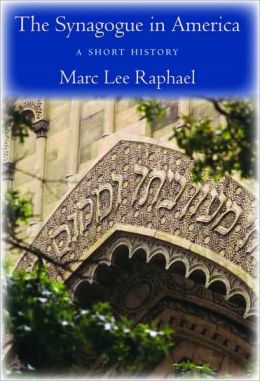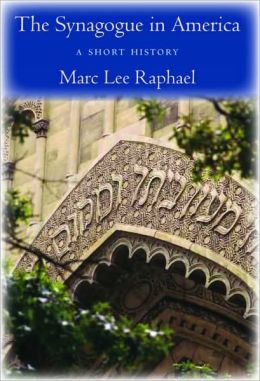This gallery contains 0 photos.
We live in an age of radical autonomy and permeable social boundaries. Ever since...Category Archives: Rabbis
Rabbi Avi Weiss on preferring the term “encounter” to “outreach”
This gallery contains 0 photos.
Weiss has a true sense of the Jewish people as a family and feels...Rabbi Avi Weiss is committed to Orthodox Judaism, but his goal is to serve all of the Jewish people
This gallery contains 0 photos.
While he is committed to Orthodox Judaism, he clearly states that his goal is...Zionism was a matter that Orthodox rabbis sermonized in the 1920s and 1930s
This gallery contains 0 photos.
In one area especially, Judaic beliefs and contemporary events intersected—Zionism. Nearly every Orthodox rabbi...“Orthodox rabbis rarely made any comments on the events unfolding on the American scene in the 1920s or early 1930s”
…Orthodox rabbis rarely made any comments on the events unfolding on the American scene in the 1920s or early 1930s. They generally ignored race, immigration, pacifism, isolationism, the League of Nations, lynching, Sacco and Vanzetti, civil liberties, the Klan, racial segregation, industrial (textile, railroad) strikes, Einstein’s theory of relativity, modern technology, modern war, Prohibition, economic warfare, Bolshevism, political events in Europe, and the Depression. Only with the rise of the Nazis and the 1939 White Paper that drastically curtailed Jewish immigration to Palestine, did European events become part of their sermons. Instead, they talked about Torah (which, all Orthodox rabbis agreed, God had revealed verbally to Moses at Mt. Sinai), commandments (“word of God,” they all agreed), ceremonies, customs, observances, rituals, holidays, festivals, and themes associated with the calendrical events in the Jewish/Judaic year. The scientific and philosophical literature of their day was useful primarily to support the conclusions of Judaic values and beliefs.
Marc Lee Raphael, The Synagogue in America: A Short History (New York & London: New York University Press, 2011), 90.
“The content of American-educated Orthodox rabbis’ English-language sermons was dramatically different from that of the (mostly) Yiddish-language sermons of an earlier generation”
…the content of American-educated Orthodox rabbis’ English-language sermons was dramatically different from that of the (mostly) Yiddish-language sermons of an earlier generation. This was particularly true between the World Wars in New York City, where Leo Jung on the West Side and Joseph Lookstein on the East Side—self-proclaimed ‘modern Orthodox” rabbis—drew upon the works of Carlyle, Dickens, Freud, Goethe, Ibsen, William James, Macaulay, Shaw, Tennyson, and Whitman, as well as on the vast body of rabbinic literature, to craft sermons much like those of American-born Reform and Conservative colleagues. Keeping in mind the warning of a contemporary Conservative rabbi, Israel Herbert Levinthal, that his printed sermons were often delivered ‘extemporaneously” and written “out a long time after their delivery,” the historian looks for typescript sermons or sermons reprinted in synagogue bulletins and the Jewish press immediately after delivery. They are abundant, and, by the 1930s, Orthodox rabbis in various places turned a Latin phrase, digested a German book on philosophy or literature, or followed the scientific arguments of the leading writers of their time as easily as they could quote from the Talmud.
Marc Lee Raphael, The Synagogue in America: A Short History (New York & London: New York University Press, 2011), 89-90.
“Rabbis need to see themselves as teaching Judaism, not as upholding the tenets of a particular movement”
The denominations, and the seminaries where they train their rabbis, will have to recognize this and take a more holistic view of their role in Jewish life. Rabbis need to see themselves as teaching Judaism, not as upholding the tenets of a particular movement. …
What’s more, the denominations, themselves, are no longer the most relevant force in shaping our synagogues. Instead of the large denominational divisions, imagine an entrepreneurial approach to synagogue life, one that encourages the growth of vibrant communities….
Edgar M. Bronfman and Beth Zasloff, Hope, Not Fear: A Path to Jewish Renaissance (New York: St. Martin’s Press, 2008), 169.
“…today, the rabbi’s position as a consultant on halachic matters is not very relevant”
…today, the rabbi’s position as a consultant on halachic matters is not very relevant. How many people turn to rabbis with questions about kashrut? Today rabbis are being asked to solve totally different problems: husband-wife or parent-child relationships, and sometimes also issues of faith. As such, the rabbi, who is not a trained marriage counselor, psychologist or philosopher, is forced to answer them. Consequently, nowadays rabbis are, unfortunately, dealing mainly with issues for which they have not been properly trained, and rarely are they dealing with those areas for which they did receive the proper training.
Rabbi Adin Steinsaltz, “The Rabbis of Today“, JPost.com (9 January 2014).
Ordained rabbis were rare in America before the mid-19th century
Ordained rabbis were rare before mid-century. The first arrived in Baltimore, in 1840, and even after they began to come over from Europe, congregations frequently used laymen or minimally trained leaders for the basic ritual services, such as reading the liturgy, providing music for worship, and chanting the Scriptures, as well as for running the synagogue or supervising the dietary regulations (especially for meat). When rabbis (or, as they were sometimes called, especially when they were not ordained, ministers or reverends) cantors (hazzanim), whether trained or not, were hired by these reforming congregations, they were usually given, in writing, the synagogue’s expectations about how they would lead (reading or singing or both) the liturgy, how frequently they would deliver sermons, in which language they would deliver them, their obligations with respect to life-cycle events such as confirmation ceremonies, weddings, and funerals (including compensation), their responsibilities with the choir, which ages they would teach, and even the precise order of the liturgy. At Rodeph Shalom, for example, the Ritual Committee instructed the service leader to begin the Friday-evening service with L’chu n’ran’na (Come let us sing) and then gave sentence-by-sentence orders. Shaarai Shomayim, a small synagogue in Lancaster, Pennsylvania (with an 1855 German constitution), hired its first ordained rabbi, Morris Ungerleider, in 1884 as “Chasan, Minister, Teacher, and Schochet.” Indianapolis Hebrew Congregation, in 1857, hired the Reverend S. Berman as “chasan, Shochet, and Shammes,” and twelve years later it sought someone who “can perform the duties of Chasan, teacher, and Shochet,” is “capable of teaching in the Hebrew, German, and English languages,” and could deliver sermons. The larger the congregation, that is, the greater the budget, the more likely these roles would be divided up among a rabbi, a cantor, a ritual slaughterer, a teacher, and a sexton.
In Atlanta, Abraham Jaffa, shochet, mohel, and hazan – slaughtered chickens in the rear of his home. Washington Hebrew Congregation, in the district of Columbia, hired two salaried officials in 1867, one to serve as lecturer and the other to serve as hazan or reader and teacher. In 1871, the congregation replaced the two two with one man, Michael Goldberg, “reader and teacher,” and explained to him that it no longer wanted sermons. He was to “read” the service, “keep” the religious school (twice during the week and on Sunday), and “educate” a choir, but he was not to preach during the Sabbath worship service. At the same time as the congregation was steadily introducing reforms, it returned to a centuries-old European tradition of eschewing weekly sermons and, instead, hiring someone to preach on occasional festivals and holy days.
Marc Lee Raphael, The Synagogue in America: A Short History (New York & London: New York University Press, 2011), 35-36.
The salaries of rabbis in America in the 1890s and 1900s depended upon denomination
While the status of women was quite similar from branch to branch, the salaries of rabbis were not. Generally, with very few exceptions, rabbis of Reform synagogues received salaries, paid monthly, which provided a reasonable standard of living for them and their families. In contrast, rabbis of Orthodox synagogues everywhere struggled to make ends meet. Many of these rabbis, in the 1890s and early 1900s, earned less than $1,000 a year in salary, and they were forced to sometimes collect the money themselves and to charge Jews for each rabbinical service. They frequently supplemented their small salary by overseeing kashruth (especially supervising animal slaughter); serving as an arbitrator in questions of Jewish law; performing marriages, divorces, and other life-cycle ceremonies; selling wine for ritual purposes (including later, during Prohibition, legally, because of provisions that allowed the sale of wine for religious use); and selling collections of their sermons. For example, Rabbi Gedaliah Silverstone, of Orthodox Tifereth Israel in Washington, D.C., claimed to have sold 4,000 copies total of three of his privately printed books. Rabbi Abraham Schapiro, of Portsmouth, Ohio’s Orthodox B’nai Abraham, was paid $600 annually in 1896 (he was offered $500 additional salary if he would close the bookshop he owned for supplemental income on Jewish holy days), while Rabbi Abraham S. Braude of Chicago, in 1916, received the same salary from his synagogue. Baltimore’s Chizuk Amuno hired Rabbi Henry W. Schneeberger in 1876 at $1,200 annually; when he sought a raise after nine years, his appeal was rejected (“no way of increasing revenue: he was told); after sixteen years of service, the trustees raised his salary to $1,600, but, when there were “not enough” funds, they reduced it to $1,500. In contrast, when Portland, Oregon’s Reform Beth Israel hired the newly minted rabbi Stephen S. Wise in 1899, they paid him $5,000 a year.
Marc Lee Raphael, The Synagogue in America: A Short History (New York & London: New York University Press, 2011), 54-55.

